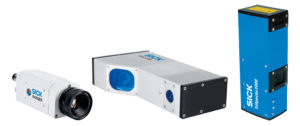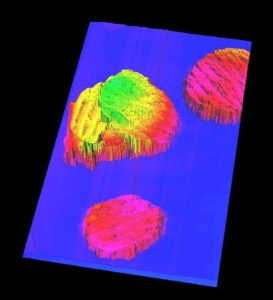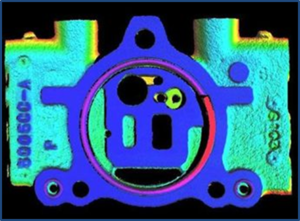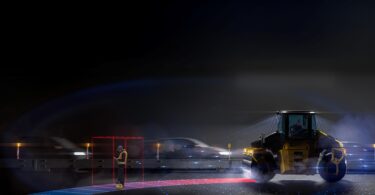 While 3D machine vision has become a reliable source of production enhancements in many industries, uncovering potential applications on the floor may not be obvious at first glance. Personnel may know the issues they face but have become resigned to living with them – unaware that machine vision can provide a solution. Discovering pain points that 3D vision can solve involves careful observation of the manufacturing process and asking the right questions. Let’s explore some key questions and how SICK 3D vision technologies were implemented, turning issues into assets.
While 3D machine vision has become a reliable source of production enhancements in many industries, uncovering potential applications on the floor may not be obvious at first glance. Personnel may know the issues they face but have become resigned to living with them – unaware that machine vision can provide a solution. Discovering pain points that 3D vision can solve involves careful observation of the manufacturing process and asking the right questions. Let’s explore some key questions and how SICK 3D vision technologies were implemented, turning issues into assets.
Do you need to measure and reduce product giveaway?
It is common that certain industry regulations require that products are not shipped under advertised volume. Because of these regulations companies, such as those in the food and beverage industry, regularly over-size package contents to ensure compliance; popularly called product give-away.
Application Example 1:
A candy bar producer is giving away product without knowing how much they are giving away. A 3D machine vision system allows for real-time feedback with trending, control limits, and the product specifications shown via a running SPC chart.
A 3D vision solution is applied to form a data map and allows the candy bar producer to precisely measure product volumes in real time to reduce give-away through tracking and feedback. This application was able to save hundreds of thousands of gallons of raw material over the course of a year. In similar high-volume facilities, material corrections as small as .5% can be justified in as little as a month
Do you rely on manual inspections?
Manual inspection stations are costly, hazardously repetitive for workers, and can either yield errors in inspection or call for inspections that simply cannot be done by a human eye.  It is an often-cited statistic that 100% human inspection catches 80% of the errors.
It is an often-cited statistic that 100% human inspection catches 80% of the errors.
Application Example 2:
A producer of potato chips relies on human inspectors to spot clumped together chips which are typically under-cooked and chewy. Very high line speeds result in many defects not being caught. By introducing 3D machine vision inspections into the processing line, the clumped chips are blown off and rejected prior to bagging.
Could you have a product recall?
The talk of a recall sends chills down any production manger's spine. Product recalls are extremely costly and can severely damage relationships with customers.
Application Example 3:
Mis-seated O-rings at a hydraulic valve manufacturer can seemingly be found by human inspection, but even small inaccuracies in the seating can cause huge problems for th e end customer. The 3D solution put in place can detect minute inaccuracies in o-ring placement. The system is able to properly assures to spec seating and eliminates failed valves in the field.
e end customer. The 3D solution put in place can detect minute inaccuracies in o-ring placement. The system is able to properly assures to spec seating and eliminates failed valves in the field.
Implementing a final quality check utilizing 3D machine vision assures that only the products that are exactly to specifications make it out to shipment and bad product are rejected or reworked. This data is can also be tracked to provide key metrics on how operations are functioning.
Do you rely on manual sorting?
Manual sorting stations, much like manual inspection, can become bottlenecks in production that are less effective and costly. The cost of a manual sorting station greatly rises if there are any errors in the sort, leading to more issues further down the line.
Application Example 4:
A company that produces canned baked beans with bacon needs to assure the correct volume of bacon is featured in each can. A robotic arm guided by a 3D vision camera provides the ability to see pieces of bacon on the line, identify their sizes and place the correct small-medium-large combination into each can.
Do you rely on CMM inspections?
Automotive and machining companies often require CMM inspections on sampled parts. These inspections are time-consuming, expensive, and tie up valuable resources. Furthermore, they are performed off-line to only a limited sample size.
Application Example 5:
A machining center needs to tie up costly CMM and engineering time in order to perform inspections on every 1000th part. Machining errors and tool wear are found only after many defective parts have gone through production. The implementation of an in-line 3D vision solution enables surface inspection and key feature measurements on each part that coming down the line without any stoppages or reallocation of resources.
Summary
Potential machine vision applications are prevalent across a wide range of industries and use cases. SICK's 3D machine vision series offers a wide range of powerful and flexible products designed for reliable operation in harsh industrial environments. They range from versatile high-speed cameras that deliver high-quality 3D and contrast images to smart and configurable stand-alone sensors that facilitate rapid development and easy integration. Their scalability ensures a perfect fit with your 3D vision application.
Knowing where to look to apply 3D solutions can result in reducing waste, improving quality, and eliminating overhead, leading to easy return on investment justifications.
****
 This is a guest post by IAS, a SICK authorized systems integrator covering the Midwest. IAS specializes in robotics and machine vision.
This is a guest post by IAS, a SICK authorized systems integrator covering the Midwest. IAS specializes in robotics and machine vision.





